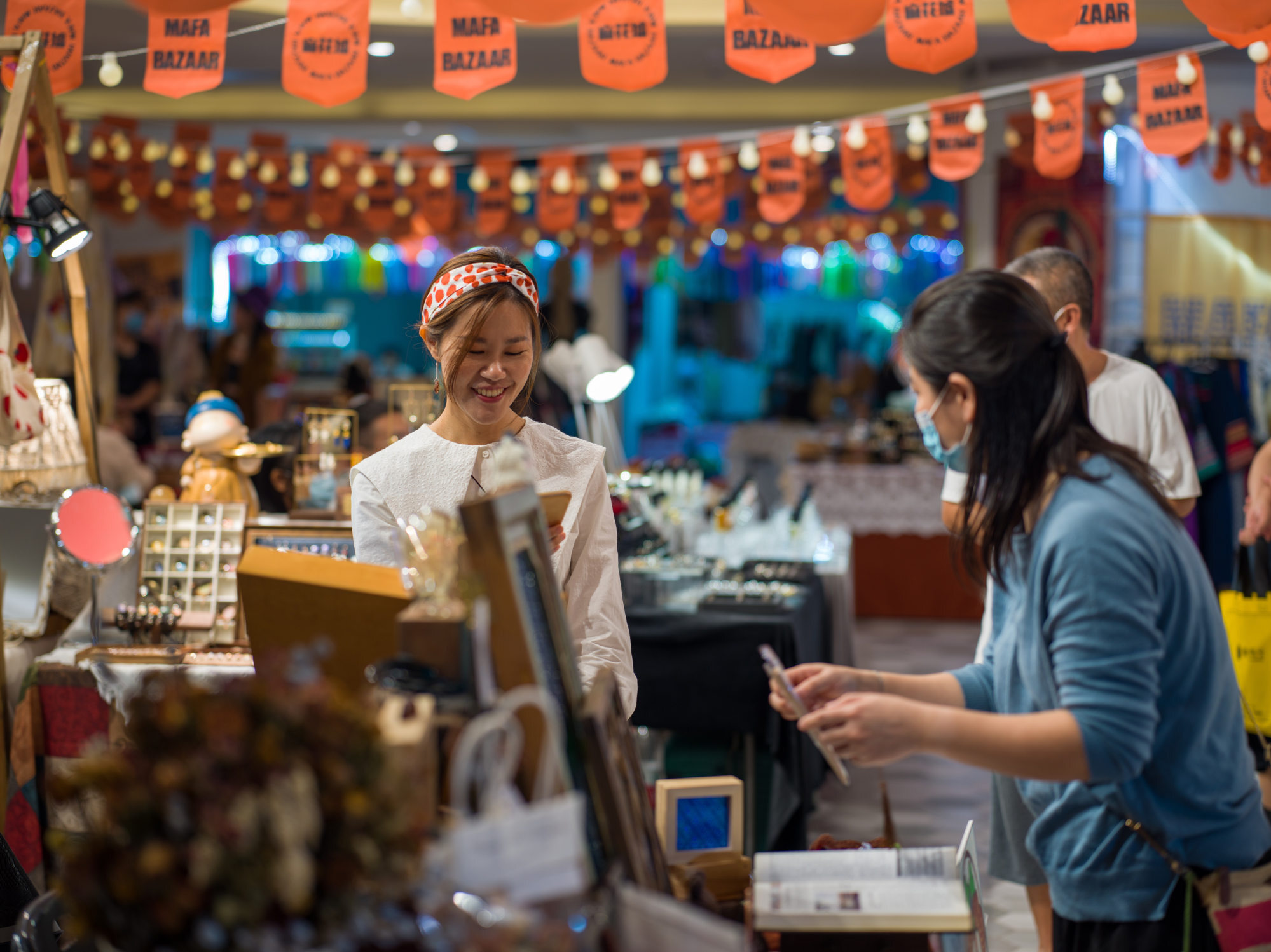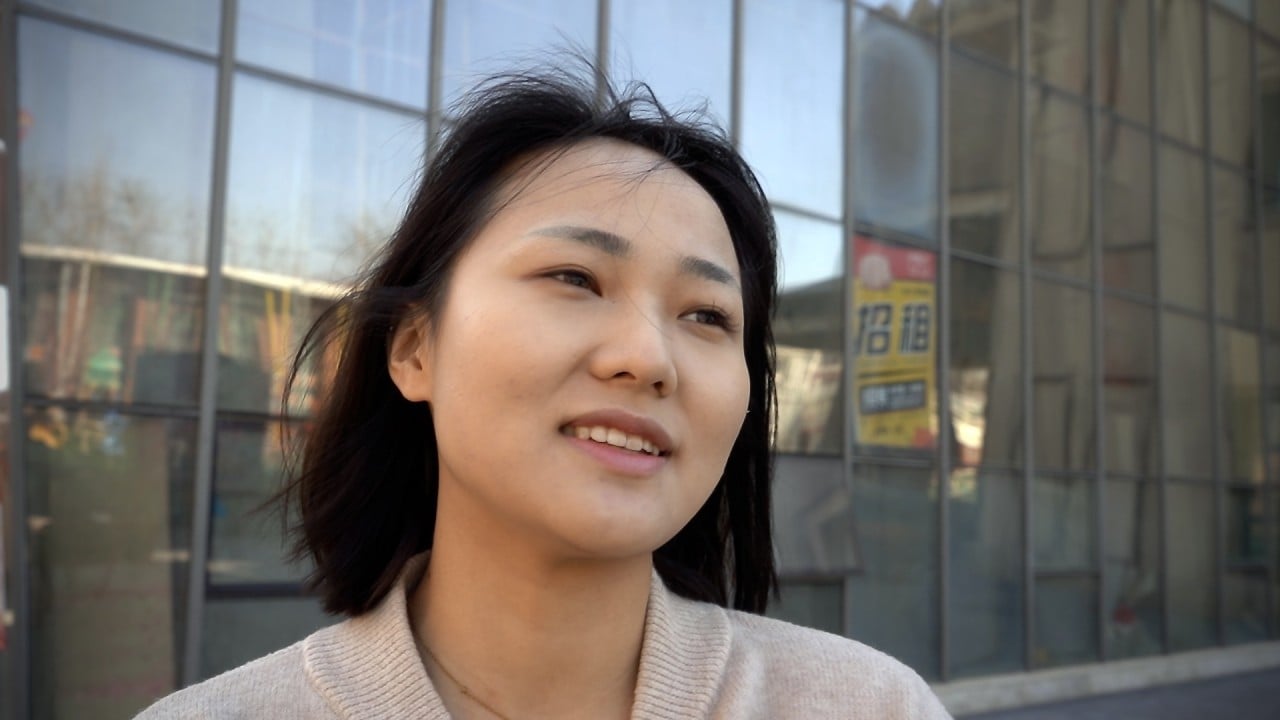
China’s ‘she economy’ booms as young and financially independent women spend for themselves
- Female millennials and members of Gen Z increasingly find happiness and self-fulfillment on their own terms, and it has reshaped China’s economy
- Chinese women comprise the world’s third-largest consumer market, close to the combined retail markets of Germany, France and the United Kingdom
Felizia Yao, a 27-year-old single project manager from Shanghai, bought herself a diamond ring earlier this year, which came as a shock to some of her friends.
“I bought the diamond because I wanted to, and I have the ability to afford it,” Yao said.
“No rules stipulate that you can only get a diamond ring when you get married, or that it has to be a gift from a boyfriend. I’m my own hero. Now I have the ability, and I like to buy things that please myself and enhance my happiness.”
With a greater deal of financial independence than their parents and grandparents had, young females in China are playing a more visible role than ever in the consumer market, contributing to the flourishing “she economy” that revolves around female consumers.

China has more than 400 million female consumers aged 20 to 60, and they account for more than 10 trillion yuan (US$1.58 trillion) worth of consumption every year, according to a 2019 report by Accenture, an information technology company.
This would make Chinese female consumers, collectively, the third-largest consumer market in the world, close to the combined retail markets of Germany, France and the United Kingdom.
According to the Accenture report, the traditional roles of men as the breadwinners and women as housewives have been rendered obsolete, as 97 per cent of urban Chinese females have an income, while 68 per cent of them are homeowners.
In families, women are often in charge of financial decisions and purchases.
Solid financial strengths underpin Chinese women’s independence when spending, as the overall income of Chinese women has increased from 17 per cent less than men’s in 2020 to 12 per cent less than that of men this year, according to a report published earlier this month by Zhaopin.com, an online recruitment services provider.
[T]he ability of women to be financially independent, and public opinion in support of women pursuing their own careers and gender equality, have continuously improved
The report added that the gender income gap is expected to narrow further in the future.
Education also plays a vital part in shaping their employment and spending habits.
According to the central government’s China Statistical Yearbook 2021, women account for 52.7 per cent of those with a bachelor’s degree or above, among adults aged 20 to 34.
In addition, China’s property market is seeing an increasing percentage of female homebuyers. They accounted for 48.65 per cent of home sales in 38 Chinese cities in 2021, according to the Beike Research Institute, a think tank affiliated with Beike Zhaofang, China’s biggest online property agency.
In Shenzhen, female homebuyers were behind 54.76 per cent of all home sales. In emerging Chinese metropolises, the proportion of women buying homes also showed rapid growth last year, accounting for 51.68 per cent of home sales in Dongguan, Guangdong province; 45.75 per cent in Shenyang, Liaoning province; and 44.27 per cent in Hangzhou, Zhejiang province.
Currently, Luo pays about 160,000 a year on mortgage payments for her two-bedroom flat, spends 60,000 yuan (US$9,400) on health insurance, and puts considerable money aside for her ambitious investment and income goals.
She said she intends to raise about 6 million yuan in the next five years to make a down payment on a piece of investment property valued at more than 10 million yuan in Guangzhou’s central business district.
“I spend thousands of yuan a month on personal trainer fitness classes and organic food,” she added. “I’m also interested in the booming sport of skiing and plan to ski across the country in the future.”
Will the Beijing Winter Olympics spur a snow sports boom in China?
A report on Chinese women’s consumption habits, published last week on International Women’s Day by the JD Research Institute for Consumption and Industrial Development, helped break down what their increased spending represents.
“The changes in women’s conceptions of consumption did not happen so that they could define themselves by what they buy, but to break the invisible boundaries and to strive towards a more authentic self,” it said.
“They are not carried away by consumerism. Instead, they are searching for, expressing and improving themselves during the process of consumption.”
In the past few years, Yijia Guo, a 26-year-old newlywed from Beijing, spent hundreds of thousands of yuan on language and law classes, beauty and fitness, in the interest of self-improvement.
“Expenses on beauty products and procedures are for me to be more beautiful; fitness is for health and a better figure; and classes were bought to improve my skills so that I could have a better professional development and more options to choose from,” Guo said. “I feel that I need to keep learning and keep moving forward.
“I am willing to spend on myself, and it is very important for women to have the financial ability to buy whatever they want. This way you don’t have to place too many expectations on others, and it can strengthen your self-identity.”
The JD report also noted a nearly 30 per cent jump in women’s spending to please themselves, compared with expenses dedicated to their families, and said women are investing more in education, entertainment and travel, as well as health-improvement services.
Female consumers also showed a strong need to make changes and feel empowered, according to the JD report, and this has manifested in their growing interest in sports such as swimming, skiing and horseback riding.
In 2021, women in China bought 8.4 times more sports-related services and items, compared with 2020, when the pandemic ravaged the nation’s economy and curtailed spending.
The pursuit for a better quality of life, especially a rising interest in tech devices, is also shared by older women. For instance, last year’s spending on smart devices jumped 122 per cent among older women aged 46 to 55, while female consumers as a whole spent 40 per cent more on smart devices than they had in 2020.
According to a report published by online business-to-consumer platform Tmall in March last year, 80 per cent of its “top brands” founded in 2020 focused on women’s consumption needs, and 40 per cent of those brand owners were female. Meanwhile, in the clothing category, female entrepreneurs accounted for more than half of all brand owners.
It’s now more ‘I’ll wait’ rather than ‘I do’ in China as marriages drop
In comparison, women accounted for less than a tenth of all Fortune 500 CEOs in 2021, according to Fortune magazine’s annual list.
“China has one of the most active groups of female entrepreneurs in the world. Both their numbers and proportion are leading compared with developed countries in the West such as the US and the UK,” said Josh Ding, managing director and partner at Boston Consulting Group.
There has been a growing consensus among China’s millennials and Generation Z that women have the ability to create businesses and to personally improve their quality of life, according to Grace Koo, the founder of Mafa Bazaar in Guangdong. The popular arts-and-crafts fair and flee market focuses on original designs and the trading of second-hand collectibles, and it has attracted more than 10,000 young businesswomen since it was founded in 2013.
“Many girls get at least two harvests from the Mafa platform – one is society’s recognition and praise of their work and abilities; the other is that, by selling their own works and designs, they can obtain a good source of income, which can support them in their continued pursuit of entrepreneurship in leading local art and fashion trends and promoting environmental protection,” Koo said.

Additionally, more than 57 million Chinese women have carved out jobs online, including in e-commerce and as influencers, according to a study released earlier this month by Ali Research that focused on female employment and entrepreneurship in China’s digital economy.
The digital economy has also lowered the barriers to employment and entrepreneurship for female workers in rural and remote areas, while also increasing the scale of employment for women with lower levels of education, the study found.
“I’m so happy to see that the threshold for young Chinese women to start a business or compete for entrepreneurship has dropped significantly from what it used to be,” Luo said.
“The barriers I’m talking about include [acquiring] venture capital and networking. Many of my clients find that, when they can support themselves through their own talents and labour, there is no need to rely on men any more. And they find that marriage is not a must but even a burden.”






